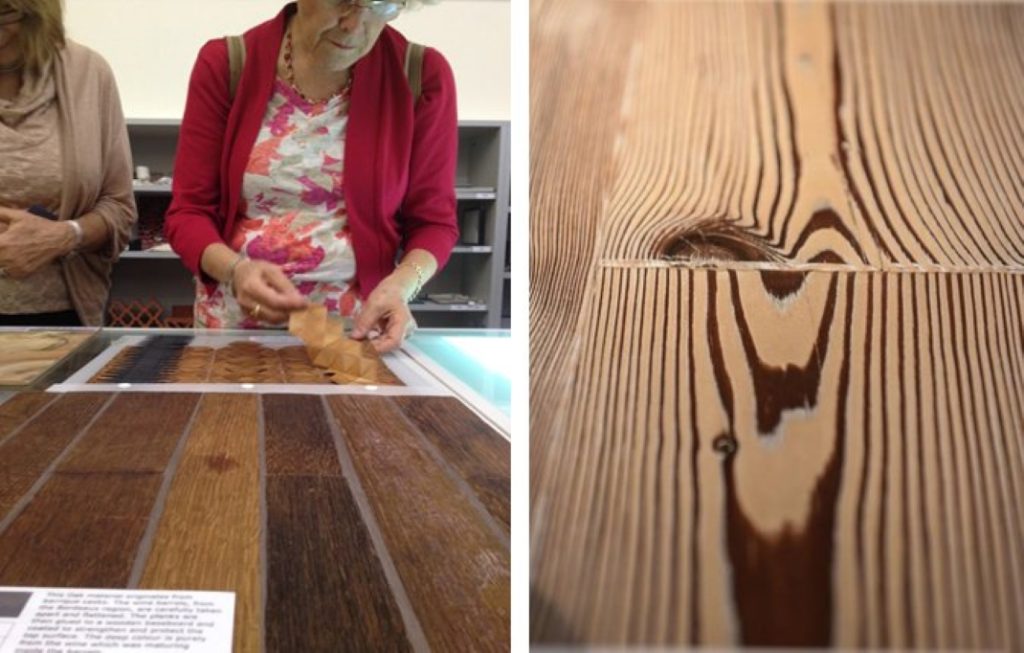The Pros and Cons of Modernity: Nature vs. Technology
It is often aptly said that, “technology is both a blessing and a curse,” and nowhere is this paradox more poignant than in the discourse surrounding the future of materials. Just as technological advancements during the Industrial Age allowed us to develop more manmade materials, the bigger the impact and toll those same technological innovations have had on our natural world. Conversely, however, we can also utilize technological advance to replicate, mimic, and manipulate naturally occurring properties that can begin to mend the immense damage caused by our industrialized complex. Continuing the environmentally conscious conversation that began at the 2013 Holon Fashion Week in early October, this time Design Museum Holon presented an exciting collaboration with Materia, a global materials network based in Amsterdam, which further explored innovative materials and techniques, inspired by nature and implemented with technology, that are capable of effectively responding to the repercussions of living in our modern world.

International Collaboration Through a series of events, lectures, and workshops, all of which were a joint collaboration between Design Museum Holon’s Materials Library, Materia and the Israeli company Parqueteam, the week provided a glimpse into the future of the material world, which ironically looked back to the natural world around us to inspire alternative, innovative solutions that are able to help aid in the goal of sustainability. By returning to the roots of the natural world, we can reposition technology as a healer rather than a destroyer, turn the natural world from the victim into the victor, and harmoniously marry the seemingly opposing forces of nature and technology to help save our planet from industrialized destruction.

More About Materia & Founder Els Zijlstra
Acutely aware of the contemporary reality of rapid population growth, increased industry, and depleting natural resources, Materia was founded by Amsterdam-based architect Els Zijlstra in 1998 as an international network in the field of innovative materials, which is dedicated to tracking and sharing the most cutting edge and environmentally conscious trends and innovations. Connecting creative professionals with manufacturers, Materia’s content driven, vast virtual database is primarily geared toward architects and designers. In addition to their online database, Materia also provides a variety of traveling exhibitions and fairs throughout the world. Keeping with Materia’s refreshingly responsible mission “to create a more beautiful, sustainable and high-quality built environment,” Els Zijlstra, Creative Director and Founder of Materia, contends that the future of materials is profoundly concerned with minimizing pollution, curtailing our carbon footprint, encouraging clean and renewable energy sources, and last but not least, developing and sharing innovatively sustainable, renewable, and recycled materials.

Changing Our Perspective Throughout the multi-day conference, Els discussed numerous environmentally conscious means of successfully addressing the mounting problems associated with a linear industrial economy, paying particular focus on the use of engineered, biobased materials, biomimicry, smart materials, and recycled materials. Shifting from a linear prospective to a circular consciousness that looks at the entire life-cycle of a material, from the energy it takes to produce the product, to what can be done after it is thrown away, Materia suggests that we can not only harnesses the wisdom of mother nature to engineer smarter, more sustainable materials, but we can also convert our existing waste into new, usable materials.

Trash into Treasure: “New Garbage”
During her presentation and exhibition, Els highlighted several state of the art examples of turning trash into treasure, including the creation of new materials from agricultural waste, such as engineered wood made from nut shells, like discarded almond and peanut casings, to the creation of a lightweight foam insulator from mushrooms, or even the production of glue and resin from soy. In addition to engineered wood made from agricultural garbage, Els also discussed the alternative solution of repurposing man-made waste, such as turning old newspapers into beautiful and unique black and white wood, or recycling other kinds of paper to make a thin, lightweight, usable wood material. Within this concept of “new garbage,” it is incumbent upon us that we also reuse and breathe new life into materials that we have previously used and thrown away, like making new wood floors from old wine or whisky barrels, or repurposing abandoned barn wood to make new furniture. By recycling, reusing, and repurposing our waste, we will be able to replace the need for new, synthetic, and less environmentally friendly production by extending and resurrecting the life of materials that we once considered dead and disposable.

Bioengineered Solutions: Biobased Materials
Emulating and enhancing designs and properties inherent and perfected in the natural world, biomimicry and biobased materials provide sustainable solutions to the population challenges, material challenges, and energy challenges currently facing our industrialized world. Biobased materials, which are defined by their ability to independently reproduce themselves, such as silk, bamboo, cork, and wool, all continue to yield more materials after they are used, which makes them much more sustainable and environmentally friendly than synthetic, man-made, industrial materials like steel, concrete, and plastics.

Monkey See, Monkey Do: Biomimicry
Biomimicry, on the other hand, refers to the science of manipulating materials to mimic natural properties in order to employ smarter, nature inspired designs. In the case of bio-engineered wood, it is possible to negate or decrease negative attributes, such as discoloration, water retention, and rotting, while also increasing its positive properties, such as weather and fire resistance, flexibility, translucency, acoustics properties, and overall resilience. For example, by simply adding a coating, or changing the materials chemical composition, wood can be upgraded to a higher, usable building material.
Adapting Mother Nature’s designs into our own, like copying the polar bear, who has white fur that insulates by reflecting against its black skin, or making black and white roofs that mimic the temperature controlled stripes of the zebra, we can use technology to return back to the time-tested properties that have already been perfected in the natural world.



